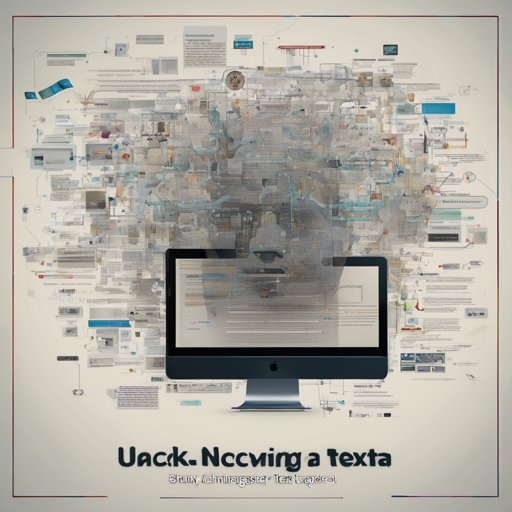The TrOCR model, a cutting-edge Optical Character Recognition technology, is designed to transform images containing printed text into readable text. This how-to guide will walk you through the process of using the large TrOCR model, specifically fine-tuned for the Spanish language, making complex tasks manageable and user-friendly.
What is TrOCR?
TrOCR stands for Transformer-based Optical Character Recognition. It employs a dual Transformer architecture where an image Transformer encodes visuals into features, and a text Transformer decodes these features into a sequence of text. Think of it as a skilled translator at a multilingual conference who carefully listens to visual presentations and translates them into words in real-time.
Setting Up the TrOCR Model
To get started with the TrOCR model in PyTorch, follow these simple steps:
- Ensure you have the necessary libraries installed, particularly `transformers` and `PIL`.
- Load your image from a URL or a local source.
- Process the image and pass it to the TrOCR model to obtain the generated text.
Step-by-Step Guide
Here’s how to use the TrOCR model:
python
from transformers import TrOCRProcessor, VisionEncoderDecoderModel
from PIL import Image
import requests
# Load your image
url = "https://huggingface.co/qantev/trocr-large-spanish/resolve/main/example_1.png"
image = Image.open(requests.get(url, stream=True).raw).convert("RGB")
# Load the TrOCR Processor and Model
processor = TrOCRProcessor.from_pretrained("qantev/trocr-large-spanish")
model = VisionEncoderDecoderModel.from_pretrained("qantev/trocr-large-spanish")
# Process the image and generate text
pixel_values = processor(images=image, return_tensors="pt").pixel_values
generated_ids = model.generate(pixel_values)
generated_text = processor.batch_decode(generated_ids, skip_special_tokens=True)[0]
Understanding the Code
Imagine you are a librarian who has received a box filled with unorganized books (your images). The TrOCR model has a systematic approach to organizing these books into a library (text). Let’s break down the steps in this analogy:
- Loading the image: You take a book from the box (the image) and prepare it for reading.
- Processor and Model Initialization: You hire an assistant (the processor) and a team of translators (the model) who are well-versed in the content and structure of books.
- Processing: The assistant helps to extract relevant information from the book (image features).
- Translation: As the translation begins, the team converts the book’s content into a readable format (text) for your users.
Troubleshooting Tips
If you encounter any issues while using the model, here are some troubleshooting ideas:
- Low Accuracy: Ensure that the images you are processing contain clear, printed text rather than handwritten text. The model is optimized for printed fonts.
- Multi-Line Text Problems: If you find that text is not being read correctly, try feeding the model single lines or ensure that the text is not vertically aligned.
- Dependencies Issues: Make sure all required libraries (like Transformers and PIL) are installed and up-to-date.
- Model Download Failures: Check your internet connection, as the model files need to be fetched from the web.
- For more insights, updates, or to collaborate on AI development projects, stay connected with fxis.ai.
Intended Uses and Limitations
While the TrOCR model is a robust tool for OCR tasks, be aware of its limitations:
- The model is not trained on handwritten text recognition.
- It is less effective with text that spans multiple lines or is oriented vertically.
- To gain optimal results, combine it with a text detection model to enhance its capabilities.
Conclusion
With TrOCR, converting images of printed texts into digital formats isn’t just plausible, it’s efficient! This powerful model exemplifies the advancements in OCR technologies that bridge the gap between visuals and textual information.
At fxis.ai, we believe that such advancements are crucial for the future of AI, as they enable more comprehensive and effective solutions. Our team is continually exploring new methodologies to push the envelope in artificial intelligence, ensuring that our clients benefit from the latest technological innovations.

